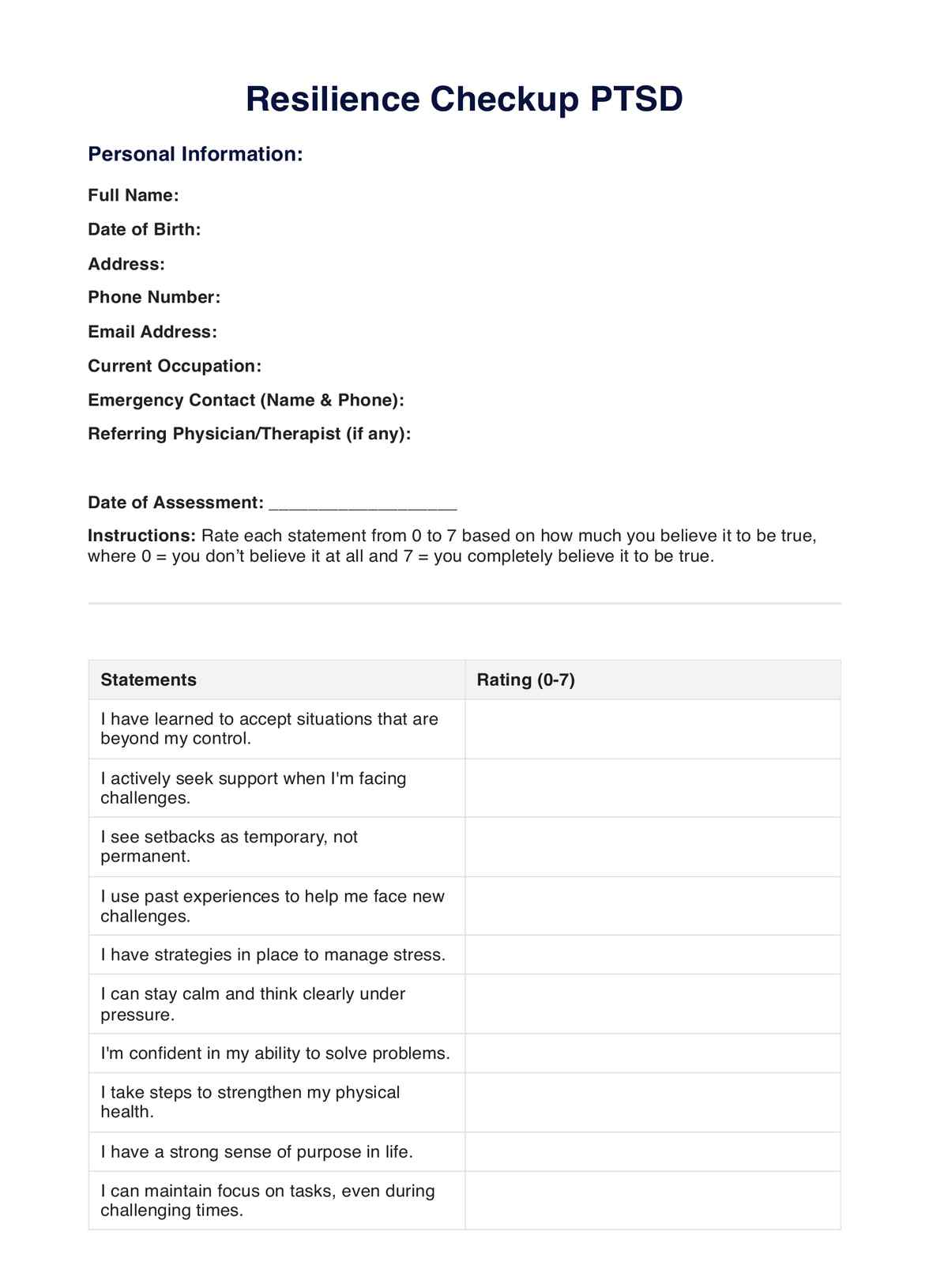The time it takes to complete the Resilience Checkup PTSD Worksheet can vary depending on the individual and their specific symptoms. However, it typically takes between 10-20 minutes to complete.

Resilience Checkup PTSD Worksheet
Looking for a way to manage PTSD symptoms? Try the Resilience Checkup PTSD Worksheet. This free tool can help increase self-awareness and improve symptom management.
Resilience Checkup PTSD Worksheet Template
Commonly asked questions
The Resilience Checkup PTSD Worksheet can be used at any time. It is a helpful tool for individuals who are experiencing symptoms of PTSD and want to increase self-awareness and manage their symptoms more effectively.
The Resilience Checkup PTSD Worksheet is designed for use by individuals who are experiencing symptoms of PTSD. This includes veterans, first responders, survivors of trauma, and anyone who has experienced a traumatic event. However, the worksheet can also be used by mental health professionals as a tool to assess and manage PTSD symptoms in their clients.
EHR and practice management software
Get started for free
*No credit card required
Free
$0/usd
Unlimited clients
Telehealth
1GB of storage
Client portal text
Automated billing and online payments











